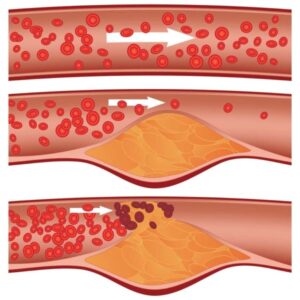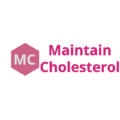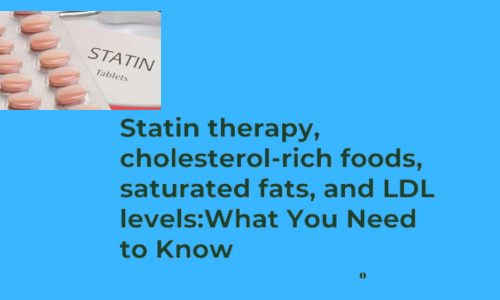Table of Contents
Introduction
Statin therapy, cholesterol-rich foods, saturated fats, and LDL levels and their relation to atherosclerosis and heart disease. Learn what you need to know to lower your cholesterol and reduce your risk of heart disease.
Cholesterol is a waxy substance that is found in all of our cells. It is essential for many bodily functions, such as producing hormones and building cell membranes. However, too much cholesterol in the blood can increase the risk of heart disease and stroke.
LDL (low-density lipoprotein) cholesterol is often referred to as “bad” cholesterol because it can build up in the arteries and form plaque. This buildup of plaque can narrow the arteries and reduce blood flow to the heart and other organs.
HDL (high-density lipoprotein) cholesterol is often referred to as “good” cholesterol because it helps to remove LDL cholesterol from the arteries and transport it back to the liver, where it can be excreted
In this blog you will learn about the results of serum cholesterol levels and the effect on the blocked arteries. Effect of statins and cholesterol lowering foods on the removal of blockage from arteries.
Some facts you should know about LDL and arterial plaque
- When your cholesterol levels are high, plaque is present in your arteries. This you can assume or if you insist on knowing whether a plaque is present get an angiography done or a calcium score done.
- Generally, if blood serum levels are high in LDL cholesterol, arterial blockage is present. It is a marker for heart disease risk.
- If Lp(a) cholesterol levels are high, then it is a sure indication that blockages are formed in arteries
- Whether LDL levels increase before arteries are injured or arteries are injured first and then cholesterol levels rise. This is an important point which no one discusses about. But we can infer that the arteries get injured first, for some reason or the other, and then the lipid levels rise.
- What exactly is deposited in the arteries, LDL or something else, is also known and this fact is also not discussed openly.
- Next, the process of atherosclerosis is going on. Atherosclerosis means that LDL is getting deposited in arteries. Every year plaque deposit grows by a few percentages.
What happens in Statin Therapy?

Statins work by blocking an enzyme called HMG-CoA reductase, which is involved in the synthesis of cholesterol in the liver.
Statins lower LDL cholesterol. By making less amount of LDL cholesterol, less deposition in the arteries is expected. This means the rate of atherosclerosis is reduced.
This can be explained in another way. If statin is not taken, then suppose that it requires 5 years to completely block the artery.
By taking stain, it may take 10 years to complete the blockage. Atherosclerosis is going on but at a slower pace.
The process of atherosclerosis is not halted. It is very essential that
Statin therapy does not address the underlying cause or the root cause of the problem. Therefore cholesterol levels never return to normal, atherosclerosis is not halted and already deposited plaque is not removed from arteries.
Statins are prescribed when your cholesterol levels are high, when your arteries are blocked, if you survive the heart attack and after angioplasty or bypass surgery.
Another peculiarity of statin therapy is that it does not raise HDL levels. HDL levels are low during statin therapy.
What is the difference between cholesterol levels when normal and after statin therapy?
- When your health is normal, your cholesterol levels are normal.
HDL = 50-60 mg/dl
LDL = 90-100 mg/dl
They are always in the above ratio. HDL: LDL = 50-60: 90-100 - When your cholesterol levels are abnormal, your HDL levels are generally low and LDL levels are high.
HDL = 40 mg/dl
LDL = 150-160 mg/dl - During statin therapy, the LDL levels may be lowered to normal, say 90 mg/dl, but HDL levels will be 40 mg/dl. This means lipid levels are normal Sometimes during statin therapy, LDL levels may be brought to 70 mg/dl. But overall the cholesterol levels are not in the normal range.
- Statins cannot remove the plaque that is already attached to the arteries. Nor it arrests the process of atherosclerosis.
If Underlying cause is addressed
- If the underlying cause of high cholesterol or Plaque build-up in arteries is understood and addressed (assume a solution is present), then after treatment the blood cholesterol levels should return to normal levels; HDL= 50-60 mg/dl and LDL= 90 mg/dl. When the underlying cause is addressed, cholesterol levels should be normal range.
- Atherosclerosis is absent
- Arteries are clean. That means a treatment method that removes plaque from arteries, repairs the arteries if they are damaged, and restores normal lipid levels.
What happens when you avoid eating cholesterol-rich food?
If you are diagnosed with high cholesterol and or artery blockage, then many people advise you to stop eating eggs as it contains cholesterol. Eggs, meat, chicken, milk, and dairy products are a rich source of cholesterol.
Just think before starting this therapy to lower cholesterol. Can this strategy can help you to lower your cholesterol and prevent heart attack?
Body makes its own cholesterol
Cholesterol obtained through food is not very high. It may be 200 to 400 mg. Do you feel that your body is now loaded with a high amount of cholesterol and your risk of heart disease will increase? This is what you are told. This is what you read in magazines and social media posts, listen to on tv, and YouTube videos.
Our liver makes about 1000 mg of cholesterol every day for its needs. If some cholesterol comes through food then it makes less amount of cholesterol.
There is a feedback mechanism. When the requirement is over, it automatically stops making cholesterol.
So, trying to avoid cholesterol-rich food has no beneficial effect. Eating cholesterol-rich food is not the underlying cause of heart disease. This exercise will be futile.
Eating saturated fats and increase in LDL levels
There is no correlation between saturated fats and an increase in LDL levels. It is thought that palmitic acid present in saturated fats increases cholesterol levels. That is not true. Every cell in our body needs palmitic acid. It is present in the cell membrane. If required cells can make their own palmitic acid.
Assuming that palmitic acid makes more LDL cholesterol, what if I tell you that the content in the plaque does not consist of LDL cholesterol? Recent studies suggest that the plaque contains a different type of material which is similar to LDL but not LDL. This theory disproves LDL and saturated fats as the cause of heart disease.
Resources
Angiography https://www.nhs.uk/conditions/angiography/
Plaque Build-up In Your Arteries: Can You Stop It And How https://www.fairviewrehab.com/nursing-care/reverse-plaque-build-up-in-arteries/
Statin Therapy: Review of Safety and Potential Side Effects https://www.ncbi.nlm.nih.gov/pmc/articles/PMC5126440/

